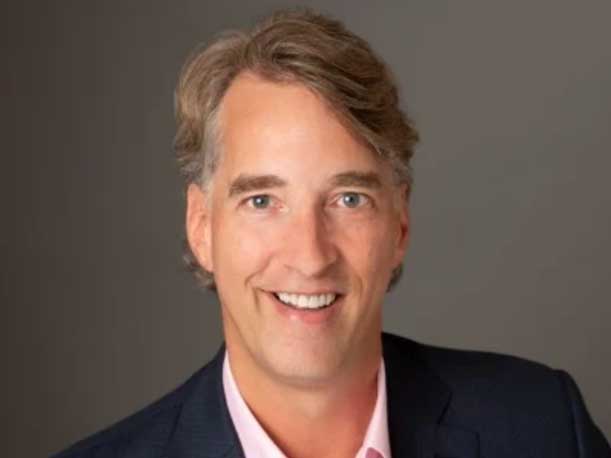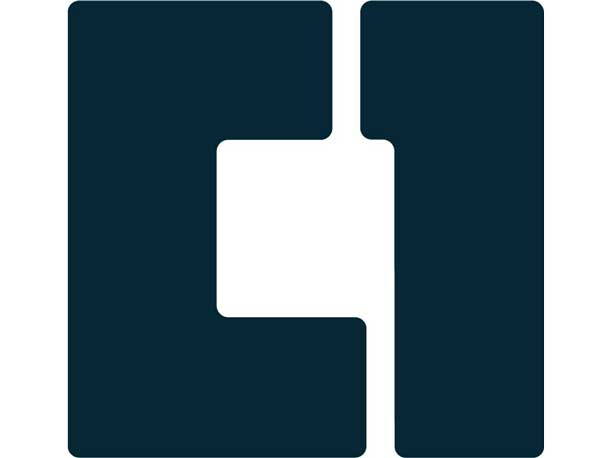ConvergeOne Rebrands As C1: ‘It’s Sharper, Cleaner, Has More Of A Punch To It’
‘When you acquire that many businesses over a relatively short period of time, there’s always opportunity for further cultural and ways of working integration. And I think we’re picking up some of that now on the backside and working really hard to create what we like to call a ‘One C1.’ So one way of working, one culture. And as part of that, we’re investing both in the training and development of our existing people and selectively investing in bringing in new people,’ says C1 CEO Jeffrey Russell.

Building On A Strong Foundation
ConvergeOne in October rebranded itself as C1. Part of the reason is that customers and vendor partners already shortened its name to C1, and “C1” rolls better off the tongue, CEO Jeffrey Russell recently told CRN in an exclusive meeting.
However, Russell said, the real reason stems from the fact that it was time for a change to reflect the transformations the managed service provider has made, particularly in the last year or so.
ConvergeOne, ranked No. 35 on CRN’s 2023 Solution Provider 500, was founded in 1993 as a Eagan, Minn.-based solution provider, but really started growing in 2018 when it was acquired in a $1.8-billion all-cash deal by Luxembourg-based CVC Capital Partners’ Fund VII as part of a strategy to build a platform MSP with a mandate to acquire other MSPs to build a national presence.
[Related: Coretelligent CEO On Building A Platform MSP And Formulating An Acquisition Strategy]
And build it they did, with over 20 acquisitions over the years, several of which happened after it was acquired by CVC Capital Partners, Russell said.
The rebranding of ConvergeOne as C1 comes as it looks to take stock in what it has built so far while preparing for the future, Russell said.
The company has almost completely changed its executive team starting with Russell himself, who joined C1 as CEO in January of this year after 25 years at Accenture including a stint as president of Accenture in Canada. He has brought in at least six new top executives.
C1 is also in the process of tightening its operations in the wake of all those acquisitions, Russell said.
“When you acquire that many businesses over a relatively short period of time, there’s always opportunity for further cultural and ways of working integration,” he said. “We’re now working really hard to create what we like to call ‘One C1.’ So one way of working, one culture. And as part of that, we’re investing both in the training and development of our existing people and selectively investing in bringing in new people.”
As ConvergeOne, C1 didn’t do a good job of sounding the trumpet about its capabilities, Russell said.
“We are in the business of doing large scale transformation, but I think we haven’t replicated those transformational stories like we can. … We have tended to do it in more isolated pockets. We need to start taking it much further across the market,” he said.
On top of all the other changes going on at CI, the company is now investing in a new facility in Hyderabad, India, Russell said.
“We’re scaling [it] from scratch to well over 500 people going into the new year,” he said. “It offers world-class development, delivery, and support capabilities, and supports some facets of our own business processes as well.
Here’s more of CRN’s interview with Russell.

So first of all, C1 versus ConvergeOne? What happened there?
A couple of things happened. One, a new leadership team and a new vision, a new voice to how we’re thinking about the business both with our team members and the market. You contemplate, there’s time for a change, and we’ve had our current naming convention for a few decades and I think, funny enough, when I went on my listening tour, and I’m still on it, both partners and customers refer to us as C1 in a colloquial sense. And I thought, it’s sharper, cleaner, has more of a punch to it, and you can pivot off it in terms of how we present ourselves in the market easier and better.
Most importantly, it’s a new time for us. And as we like to think about it, we represent three primary ways we go to market which I don’t think people really appreciate. The first is our channels, and the relationships we have with our channel partners historically as we’ve moved across a variety of different new partners to reflect our networking and security business model and experience. So we’re no longer the ‘Avaya shop’ as history would tell.
The second part is, we have our own product portfolio. We’ve been building out and developing and commercializing over the last five years a set of AI-based conversational tools, which are kind of industrial strength, and 10s and 10s of customers utilizing those products that in many cases compliment those of other partners or in some cases or we operate in our own right.
And the third, and I think what makes us truly unique, is we have a world-class set of very deep domain services, including professional services, consulting-led, and managed services. So we run operationally on behalf of our customers many of their environments, and it’s at scale. And the newest part of that is, we have created a facility in Hyderabad in India, which we’re scaling from scratch to well over 500 people going into the new year. It offers world-class development, delivery, and support capabilities, and supports some facets of our own business processes as well.

You’ve said a mouthful, Jeffrey. First of all, talk about the new leadership changes.
I’m in my tenth month now. I came in towards the beginning of this year. Sal Lombardi our CFO, also joined on the same day as I did, so it was a two-for-one arrangement. We’ve since added a head of strategic operations, Candace Holt, who is ex-Accenture like I am. We’ve added a chief product and marketing officer, Amrit Chaudhuri, who came to us from a combination of 8x8 and RingCentral. And we have a new chief revenue officer as of a few weeks ago, John DeLozier, or JD as he’s known in the industry. John was the president of ScanSource’s Intelisys, and previously had history at 8x8 and a number of other industry players. The team also has Omar Bhatti, who historically ran services and is now our chief customer officer because we see customer success at the heart of what we do in terms of delivery of our capabilities. And Meghan Keough, our new senior vice president of marketing. It is a substantive new team. And then we’ve also been reconfiguring other roles.
Why the big investment in the new leadership team?
We’re investing in fresh or new views and new capabilities consistent with the new business that we’re trying to create, and the new C1. I think it’s always time for new blood and a fresh perspective and a fresh outlook, and to be honest with you, in some of the roles that didn’t exist. We did not have a chief product or chief marketing officer. We did not have head of strategy and strategic operation. So some were net new roles to reflect who we are as a business now, and some were more natural opportunities to refresh and change leadership and certain roles.

Is there a lot of investment going on to expand C1 through acquisitions?
We’ve done extensive acquisitions 20-plus over the past 10 to 15 years. So I think it’s actually the opposite. We’re investing in a newer, focused organic growth business model. And recognizing that, going from an inorganic business model to an organic model is culturally different, capability-wise is different, people-wise is different. We’re investing in our people. Hyderabad is example in terms of capability, but also in our existing people. What I’ve personally found coming into the company is that we have a tremendous group of people across the business that came in over the years through different acquisitions, and some with a very long tenure. They come in, and they stay, which is great. But we haven’t done the kind of what I call operating company integration opportunity that we’re now doing.
When you acquire that many businesses over a relatively short period of time, there’s always opportunity for further cultural and ways of working integration. We’re now working really hard to create what we like to call ‘One C1.’ So one way of working, one culture. And as part of that, we’re investing both in the training and development of our existing people and selectively investing in bringing in new people.
So while platform MSPs are charged with investing in the acquisition of more MSPs, you are talking about investing to focus on all the acquisitions that you’ve already made?
Exactly. If you look at it retrospectively, the acquisitions were as you’d expect some combination of geographic, industry, and capability. As we built out a stronger, for example, security capability in the last three to five years, we went out and invested in security companies. We feel like we have the capabilities that we need in terms of the three capability sets of experience, networking, and security. It’s now about building those out. And we have a great geographic presence, other than globally, and that’ll be a consideration over the next three to five years. But we serve our clients globally. Our India business serves our market in the US. We have an opportunity there to contemplate expanding it to Asia Pacific or Europe, and but we’ll see what time brings on that front.

Is C1’s India presence focused on development?
It does two things. Its primary focus is our Global Innovation and Capability Center, or GICC. That’s a strong vehicle for growing our innovation, our capabilities in terms of how we deliver our work. So think of it as professional services and managed services. It also supports different areas of our internal processes, such as finance, HR, procurement, sales operations, the support side of sales, etc. So it’ll continue to expand. In fact, we’re building out our pricing and market intelligence capabilities to support the teams on the ground here. We’re super excited about it because it’s an asset where we enjoy the advantage of coming into that market relatively late. We have handpicked everybody, and are building a culture wrapped around and wrapped in One C1. And of course I know that market very well from my many decades at Accenture and I couldn’t be more excited about the culture and that capability being built there.
Was that India location built from the ground up?
In physical location terms, yes. We’ve fit out a purpose-designed facility. Progressively, over the last few years we’ve worked both with subcontractors and ourselves, and now we’re making the transition to having full-time employees there. They’re in what we feel is a purpose-built, world-class facility.

How do you find the right people in India given the competition you have from very large companies like Wipro and Infosys?
I know those companies well from my past life, but you’d be surprised. It’s a combination. We spent a lot of energy investing upfront, and we have people like me and our head of services who had a history at DXC, Accenture, etc. So we have people that the market who know people. And in India like anywhere else, they follow people. So we’ve focused on bringing the right leaders in and then surprise, surprise, people follow the right leader.
Looking ahead, 2024 is almost upon us. What are your strategic priorities for 2024?
I think 2024 is about really getting the right balance and the right complement between channel, product, and services. So we’re spending a lot of energy on each. Let me give you an example. In services, we’re continuing to build out and solidify our managed services which a lot of our partners and customers are asking for because they don’t have the capability themselves or they don’t want to build and nurture and grow that capability. We have a lot of focus around managed services to complement our very strong professional services. Another thing with services, and the reason our new head of services is our chief customer officer, is recognizing that our extraordinarily high net promoter score (NPS) happened because we deliver really well on customer expectations. Services is at the heart of customer success in many respects, and therefore very much a demand generating model for our services business. We have a very large world-class services business, and I think we need to activate it even more so.
On product, we continue to put R&D investment into our generative AI-based conversational tools and platforms. So a lot of energy going into the commercialization of the products, not to compete against our partners, but to complement our partners. We’re spending a lot of energy with our partners helping them understand our strong complementary capability, and also directly with our customers to help them understand through better use cases and testimonies our work in the channel.
Last but not least, what’s different in ‘24 is becoming a much stronger solutions-led company that brings those three facets of our business together: services, product, and channel. And that’s what makes us different: we have those three capabilities at scale. And we need to be smarter about creating valuable solutions for our customers that really bring the best of all three to each and every opportunity in a fit-for-purpose way.
You’ll also see us take a much more proactive stance in the market in terms of market positioning and support in terms of reimagining our actual brand and our market position and how we communicate our brand and position in the market. …
You’ll also see a much stronger industry orientation in ‘24 and beyond. Customers in a given industry want to understand your strength and your knowledge. And each industry is a nuanced. … We do a lot of work in healthcare, financial services, and banking and insurance, both with regional and global players. Those industries are just examples, but the good news is we have depth. We just haven’t really leveraged it across the business. We’ve had pockets of strength. But the people that we’re doing great work with at a hospital or school or whatever in Boston or New York or, call it the East Coast, weren’t necessarily joined up with the great work that was going on in the West Coast or in the central part of the country. And I feel when you get those industry stories joined up, our customers and our teams are going to benefit from it. So I think the industry piece will become much, much stronger.
Finally, we are in the business of doing large scale transformation, but I think we haven’t replicated those transformational stories like we can, the client stories and the testimonies across different industries in terms of the work we’ve done in infrastructure like airports, in healthcare, in utilities, and in education. But we’re not replicating those transformational stories like we could, and so I think we’ll do a much stronger orientation around helping our customers truly transform their businesses and take advantage of the fact that we already do that. But we have tended to do it in more isolated pockets. We need to start taking it much further across the market.